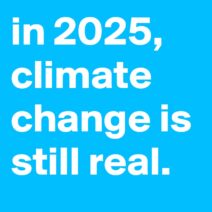Electricity is an indispensable commodity in modern life, powering our homes, businesses, and infrastructure. However, a significant yet often overlooked aspect of energy consumption is its latent climate cost. Understanding the interplay between electricity generation and its environmental ramifications reveals a complex tapestry of ecological challenges that necessitate urgent discourse. This exploration delves into the nuances of the hidden climate costs associated with various electricity sources, including fossil fuels, nuclear power, and renewable energies.
The predominant source of electricity worldwide stems from fossil fuels—coal, natural gas, and oil. These traditional energy sources are notorious for their substantial carbon dioxide (CO2) emissions when combusted. Coal, in particular, stands out as one of the dirtiest forms of energy due to its high carbon content and concomitant pollution outputs. When burned for electricity, coal releases a multitude of harmful particulates and greenhouse gases, exacerbating the global warming crisis. Furthermore, the extraction of coal through mining disrupts local ecosystems and generates long-lasting environmental scars.
Natural gas, often marketed as a cleaner alternative to coal, is not without its own issues. While it emits less CO2 per unit of energy produced compared to coal, natural gas extraction and transportation can lead to methane leaks. Methane, a potent greenhouse gas with a global warming potential significantly higher than CO2, poses a severe threat in weakening our climate stabilization efforts. In essence, the transition from coal to natural gas may reduce emissions in the short term but fails to entirely dismantle the broader challenges of climate change.
On the other hand, nuclear power presents an intriguing dichotomy in the context of climate costs. Nuclear energy generation itself emits negligible greenhouse gases compared to fossil fuels. However, the nuclear lifecycle presents a host of environmental concerns. Mining uranium, the fuel for nuclear reactors, comes with risks of habitat destruction and potential contamination of groundwater. Moreover, the issue of radioactive waste disposal remains a critical challenge—generating long-lived waste that requires secure, isolated storage solutions for thousands of years. These questions bring to light the complexities surrounding a nuclear renaissance as a climate solution.
Amidst these concerns, renewable energy sources—solar, wind, hydroelectric, and geothermal—emerge as viable alternatives, promising a reduced climate footprint. However, even renewable technologies harbor hidden environmental costs. The production and disposal of solar panels, for instance, involve toxic materials and rare earth metals, leading to pollution during sourcing and manufacturing processes. Wind turbines, while lauded for their clean energy output, also come with ecological ramifications such as habitat disruption for birds and bats, posing serious biodiversity concerns. The construction of hydroelectric dams can alter local water ecosystems, impacting aquatic life and water quality.
When evaluating the climate costs of electricity, it is imperative to consider the entire lifecycle of energy production. This perspective encompasses not only the operational phase but also the extraction, manufacturing, installation, and decommissioning stages. For instance, the mining of lithium—critical for batteries in electric vehicles and grid storage solutions—creates significant environmental ramifications, from habitat loss to water depletion. As the demand for these technologies surges, the ecological toll of lithium extraction must not be sidelined.
Energy efficiency plays a pivotal role in mitigating the hidden climate costs of electricity consumption. Implementing energy-efficient technologies and practices can reduce overall demand, thereby lessening the strain on energy generation systems and minimizing emissions. Simple actions such as upgrading to LED lighting, utilizing energy-star appliances, and enhancing insulation can collectively yield substantial environmental benefits. Furthermore, advocating for smart grid technologies can optimize electricity distribution, enabling a more efficient allocation of resources and integrating renewables more seamlessly into the energy mix.
Demand response programs, which incentivize consumers to adjust their electricity usage during peak periods, also contribute to reducing the hidden climate costs. By flattening demand, these programs help avoid reliance on fossil-fuel peaker plants, which are often deployed to meet surges in electrical consumption. Encouraging consumers to engage in proactive energy management cultivates a culturally attuned approach to electricity and establishes a symbiotic relationship between energy production and consumption.
Policy interventions are crucial in addressing the intricate nexus of electricity and climate costs. Governments play a paramount role in shaping energy landscapes through legislation, subsidies, and incentives that promote cleaner technologies and discourage fossil fuel reliance. Transitioning from carbon-intensive energy sources to renewables thus demands a concerted policy effort that supports research and development, infrastructure investment, and consumer education. The creation of a robust carbon pricing framework can additionally serve as a catalyst for this energy transition, internalizing external costs and driving a shift to more sustainable practices.
Ultimately, as society grapples with the implications of climate change, understanding the hidden costs of our electricity consumption is crucial. The choices made today can have profound repercussions for future generations. Transitioning to a cleaner energy landscape requires a collective commitment—embracing transparency, educating consumers, and fostering sustainable practices. Through conscious efforts, we can mitigate the hidden climate costs of our electricity, steering toward an ecologically responsible and sustainable future.





